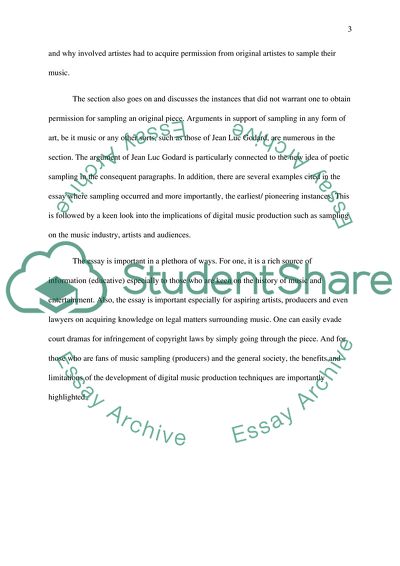Cite this document
(“How have digital music production practices (like sampling) affected Essay”, n.d.)
How have digital music production practices (like sampling) affected Essay. Retrieved from https://studentshare.org/music/1653869-how-have-digital-music-production-practices-like-sampling-affected-notions-of-musical-authenticity-discuss-the-arguments-of-goodwin-schumacher-rietveld-andor-katz-in-relation-to-specific-production-practices-andor-technology
How have digital music production practices (like sampling) affected Essay. Retrieved from https://studentshare.org/music/1653869-how-have-digital-music-production-practices-like-sampling-affected-notions-of-musical-authenticity-discuss-the-arguments-of-goodwin-schumacher-rietveld-andor-katz-in-relation-to-specific-production-practices-andor-technology
(How Have Digital Music Production Practices (like Sampling) Affected Essay)
How Have Digital Music Production Practices (like Sampling) Affected Essay. https://studentshare.org/music/1653869-how-have-digital-music-production-practices-like-sampling-affected-notions-of-musical-authenticity-discuss-the-arguments-of-goodwin-schumacher-rietveld-andor-katz-in-relation-to-specific-production-practices-andor-technology.
How Have Digital Music Production Practices (like Sampling) Affected Essay. https://studentshare.org/music/1653869-how-have-digital-music-production-practices-like-sampling-affected-notions-of-musical-authenticity-discuss-the-arguments-of-goodwin-schumacher-rietveld-andor-katz-in-relation-to-specific-production-practices-andor-technology.
“How Have Digital Music Production Practices (like Sampling) Affected Essay”, n.d. https://studentshare.org/music/1653869-how-have-digital-music-production-practices-like-sampling-affected-notions-of-musical-authenticity-discuss-the-arguments-of-goodwin-schumacher-rietveld-andor-katz-in-relation-to-specific-production-practices-andor-technology.


